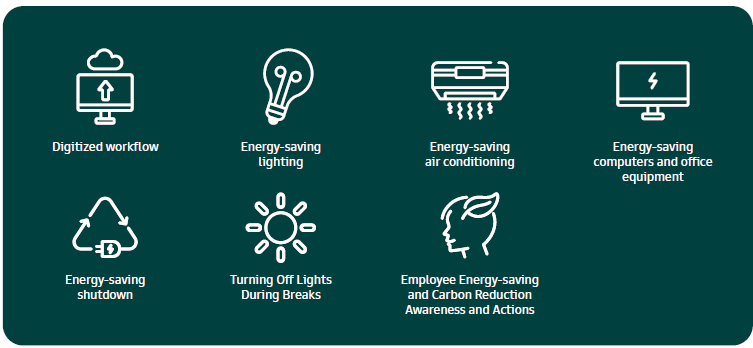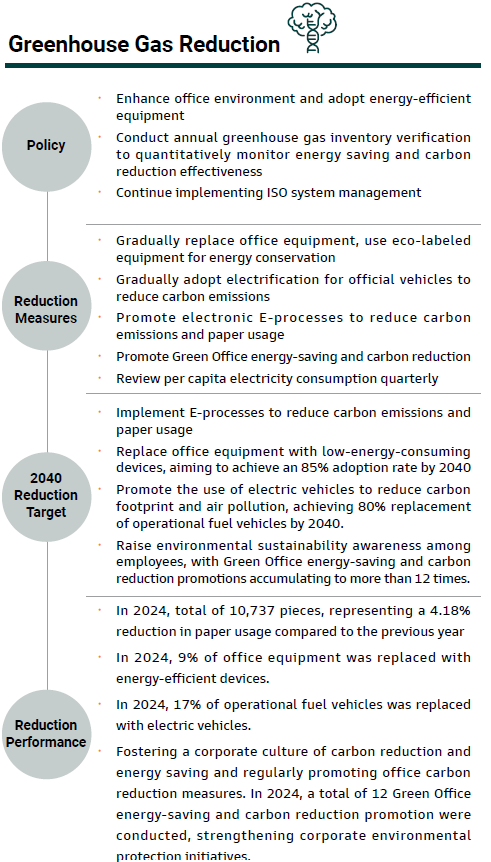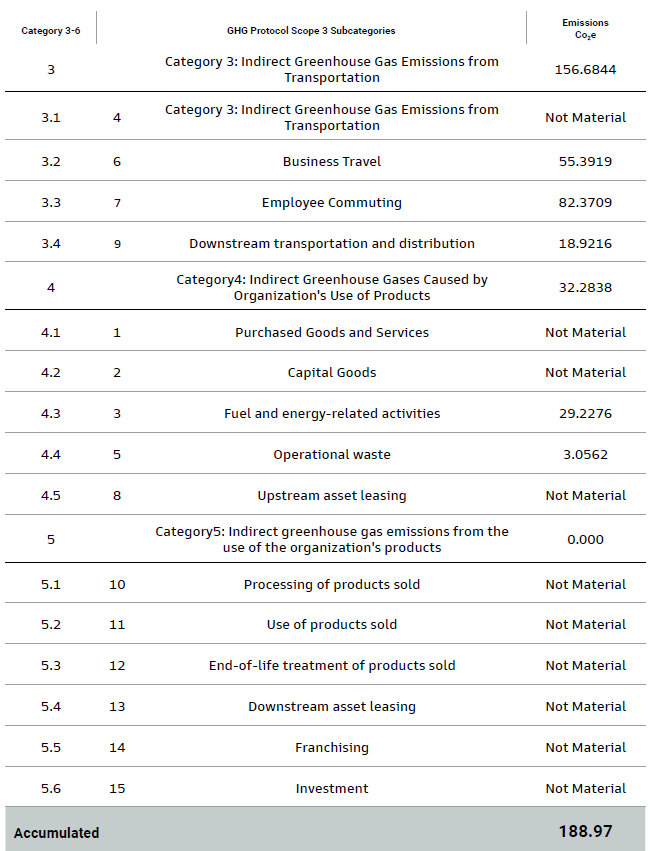Climate Change and Greenhouse Gas Management ┃ Management Approach
Importance to the Company
-
Evaluate and monitor significant risks and opportunities brought by climate change to the enterprise, establish and implement strategies to mitigate risks and capture opportunities, and assess their financial impacts. Global warming caused by greenhouse gases is a critical issue that threatens the survival of ecosystems worldwide. Novatech recognizes this as a key concern for corporate sustainability and actively promotes energy conservation and carbon reduction.
Management Strategies
-
Following TCFD (Task Force on Climate-related Financial Disclosures) recommendations, the Company establishes climate change risk and opportunity identification procedures, reviews key management points to formulate relevant management strategies and measures,gradually builds systematic and scientific management mechanisms,and thereby responds to the United Nations Sustainable DevelopmentGoal SDG 13 Climate Action.
Description of actual and potential negative and positive impacts
Positive:
- Identify factors affecting company operations due to climate change, such as floods and droughts, increased customer demand for sustainable products, and rising raw material costs, to prepare early and ensure operational continuity; increase revenue through investing in related business areas and enhance the Company's reputation and value.
- Understand the Company's greenhouse gas emissions, effectively manage data, and plan future carbon reduction pathways and strategies.
Negative:
- Failure to manage climate change issues may result in damage to operational sites, disruptions in raw material supply affecting delivery schedules, construction delays by contractors, leading to postponed revenue and higher interest costs.
- Amid the global trend toward emission reduction and even net-zero,failing to effectively manage greenhouse gas emissions increases the risk and expenses of future carbon tax and carbon fee collection.
Action Plans/Resources
- The Secretary of Sustainable Development and Supporting Center promote climate change risk assessment training courses.
- Regular statistics and internal/external verification of greenhouse gas emissions.
- Prepare annual greenhouse gas inventory report.
Policy/Commitment
- Continue to focus on energy and environmental issues and promote ISO 14064-1 organizational greenhouse gas inventory in terms of energy and environmental policies.
- Set and implement energy and environmental goals and targets to fulfill energy and environmental policies.
- Continue to conserve energy and improve environmental pollution,reduce waste generation.
- Adopt the principle of valuing energy resources and conduct companywide education on energy conservation and carbon reduction.
- Comply with environmental protection and energy laws and regulations.

* This material topic has no actual activities or business relationships involving negative impacts in the current year.\
Climate Risk and Opportunity Management
Amid the escalating impacts of global climate change, climate risk and opportunity management has become a crucial issue that businesses and investors cannot
ignore. The Task Force on Climate-related Financial Disclosures (TCFD), as an international organization promoting standardization and transparency of climaterelated financial information disclosure, provides a key framework for climate risk and opportunity management. Governments worldwide, in response
to related climate risks, have successively introduced mandatory regulations requiring companies to conduct financial impact analysis of climate risks and
opportunities following the TCFD framework.
In response to the international trend of climate change information disclosure, Taiwan's Financial Supervisory Commission continues to promote enterprises' sustainable development and requires companies to disclose climate-related financial impact information following the TCFD framework. To align with international trends and regulatory requirements, and to deepen the Company's climate governance, Novatech conducted climate risk and opportunity analysis in 2022 following the Task Force on Climate-related Financial Disclosures (TCFD) framework. Based on the identified key climate risks and opportunities, we analyzed financial impacts under different climate scenarios,and formulated response strategies and management objectives to enhance the Company's climate governance capabilities and resilience. We also aim to mitigate the operational impacts on Novatech brought by low-carbon transition and physical disasters.
1. Governance
Novatech's Board of Directors serves as the highest authority in climate change governance. To enhance the Board's functions and strengthen management and sustainable governance, the Sustainability and Nominating Committee has been established to faithfully oversee various control measures formulated by the Sustainability Promotion Group.Under the Board's authorization, the committee reviews sustainability implementation results and submits reports to the Board annually. The Board reviews these reports, provides necessary guidance, and recommends adjustments when needed. Through this robust organizational structure and process, Novatech aims to ensure sustained corporate growth while upholding its responsibilities to society and the environment amid the challenges of global climate change.
The Sustainability Promotion Group plays a key role in Novatech's organizational structure, responsible for convening various coordinating teams to jointly identify climate change-related risks and opportunities. The process includes detailed analysis of key climate risks and opportunities that may impact the Company's operations, financial performance, and reputation, and further development of corresponding strategies and management objectives. By adopting this process, Novatech effectively integrates climate change considerations into its business decisions and long-term development plans.
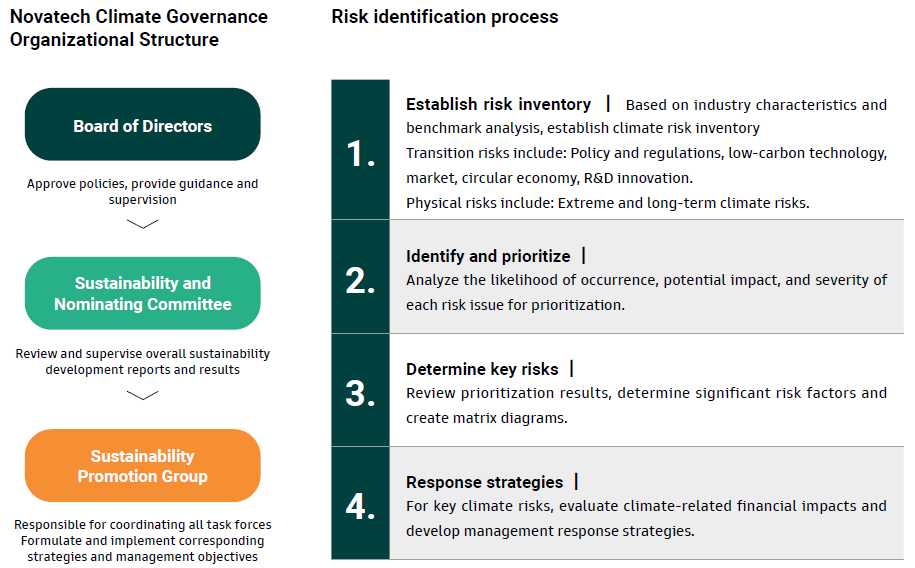
2. Strategy and Risk Management
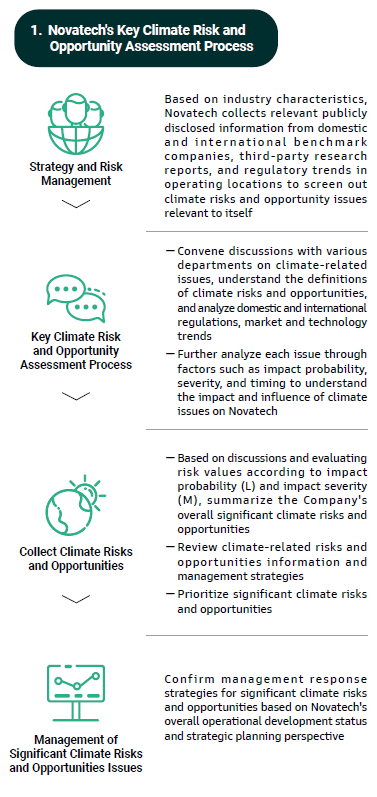
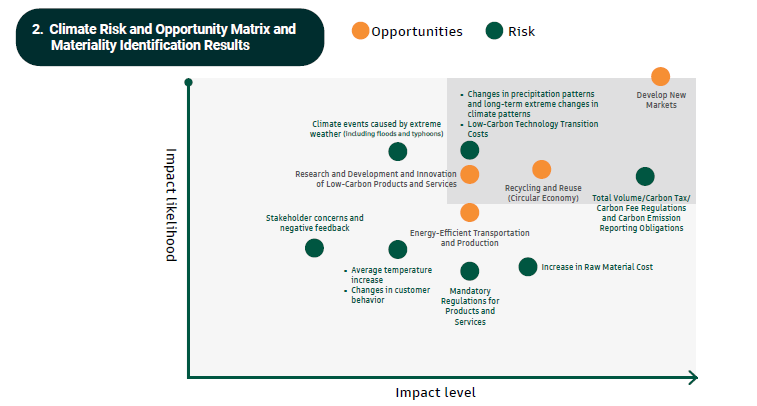

Based on the materiality identification results, Novatech conducts further analysis and develops scenario assumptions for various climate risks and opportunities according to department heads' insights, market dynamics, international trends, and external research reports. Furthermore, the Company examines the potential substantive impacts of climate risks and opportunities under different scenarios, and reviews internal resources and future business development to propose relevant response strategies.
Among the six key climate risks and opportunities, Novatech conducted further simulation and quantification for two items: "Total volume/carbon tax/carbon fee regulations and carbon emission reporting obligations" and "Changes in rainfall (water) patterns and long-term extreme changes in climate patterns". The analysis scenarios used are explained below.
Regarding the issue of "Total volume/carbon tax/carbon fee regulations and carbon emission reporting obligations",Novatech adopted the Nationally Determined Contributions (NDC) and 1.5°C scenario (Network for Greening the Financial System, NGFS) to simulate potential carbon fees/carbon tax costs. For the issue of "Changes in rainfall (water)patterns and long-term extreme changes in climate patterns", Novatech used the map data published by the National Science and Technology Center for Disaster Reduction (NCDR), including scenarios below 2°C and RCP 8.5, to simulate the number of engineering projects that may be affected during extreme rainfall.
Novatech's Response and Management of Key Climate Risks and Opportunities
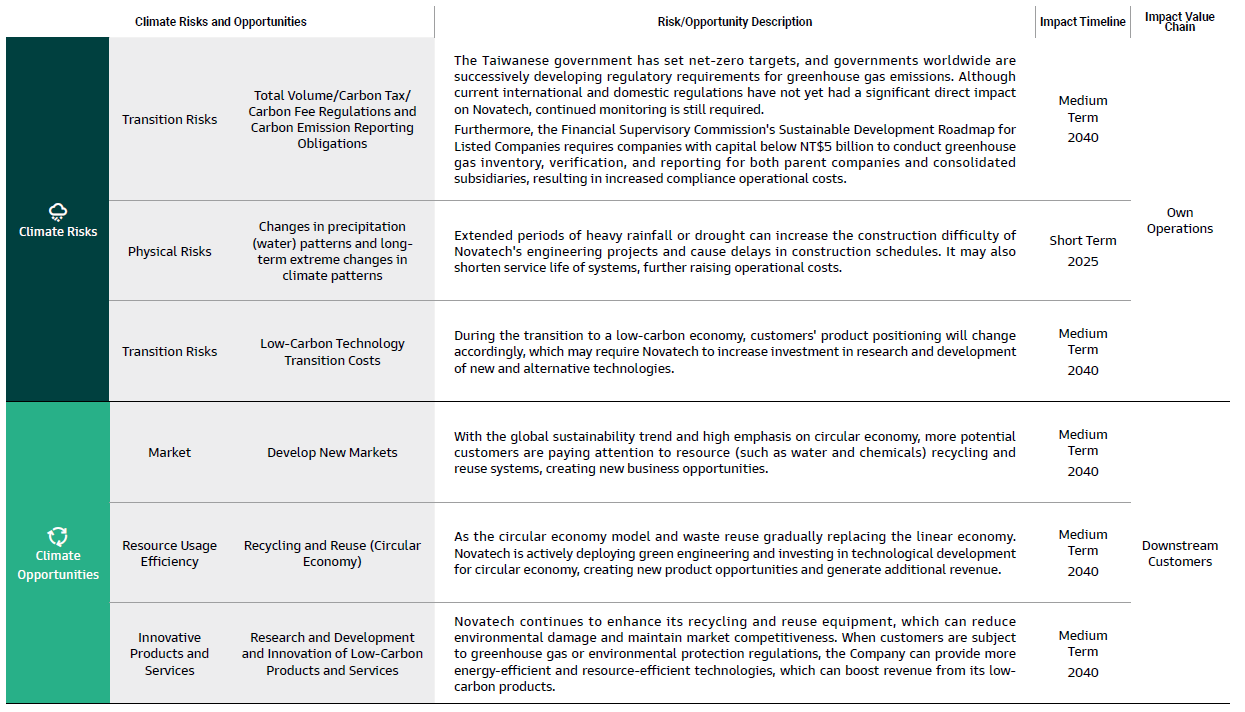
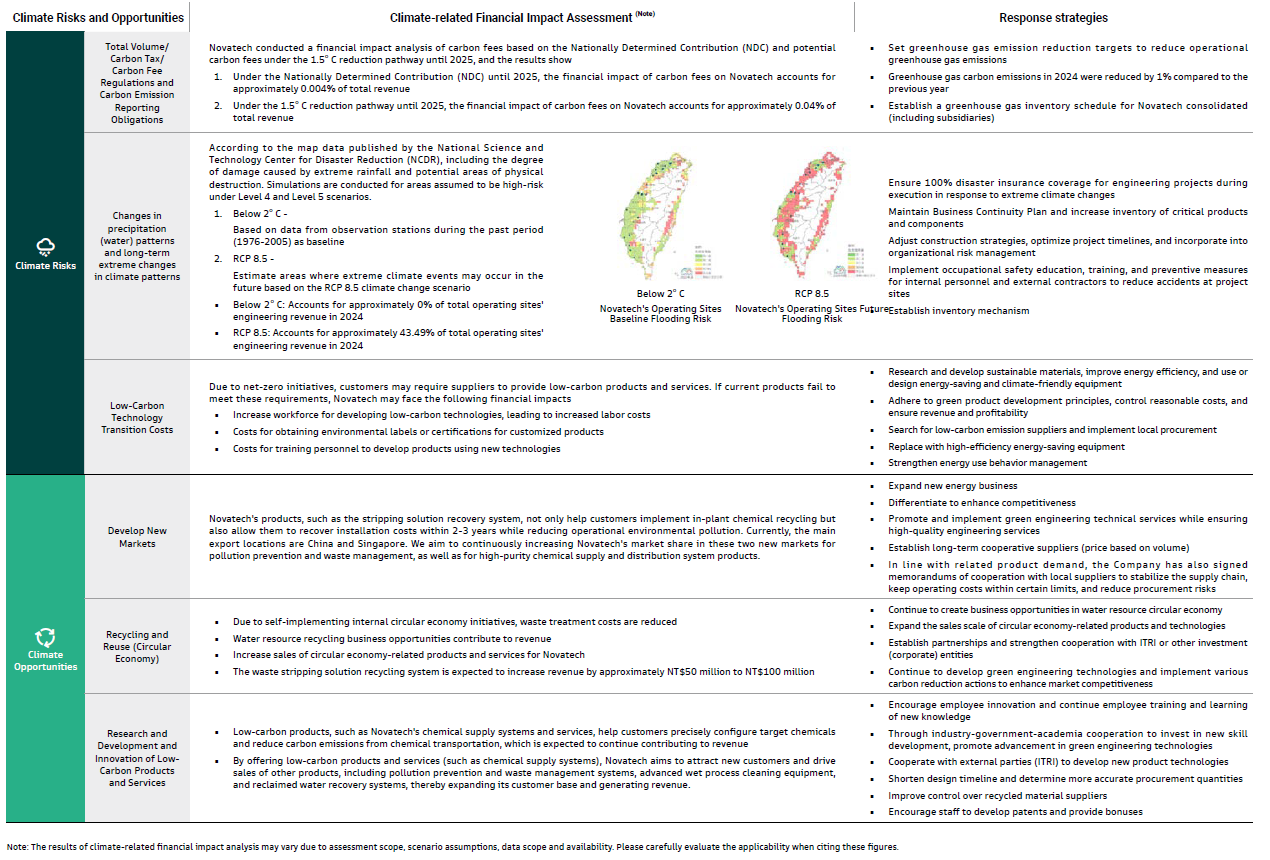
3. Metrics and Targets
Novatech expects both its operations and customers to successfully transform under climate change, implementing sustainable development and corporate social
responsibility. To regularly review the response to climate risks and opportunities, Novatech has established relevant metrics and targets, allowing the Sustainability
Promotion Group to review the implementation effectiveness of control measures and track annual achievement status for Board oversight.
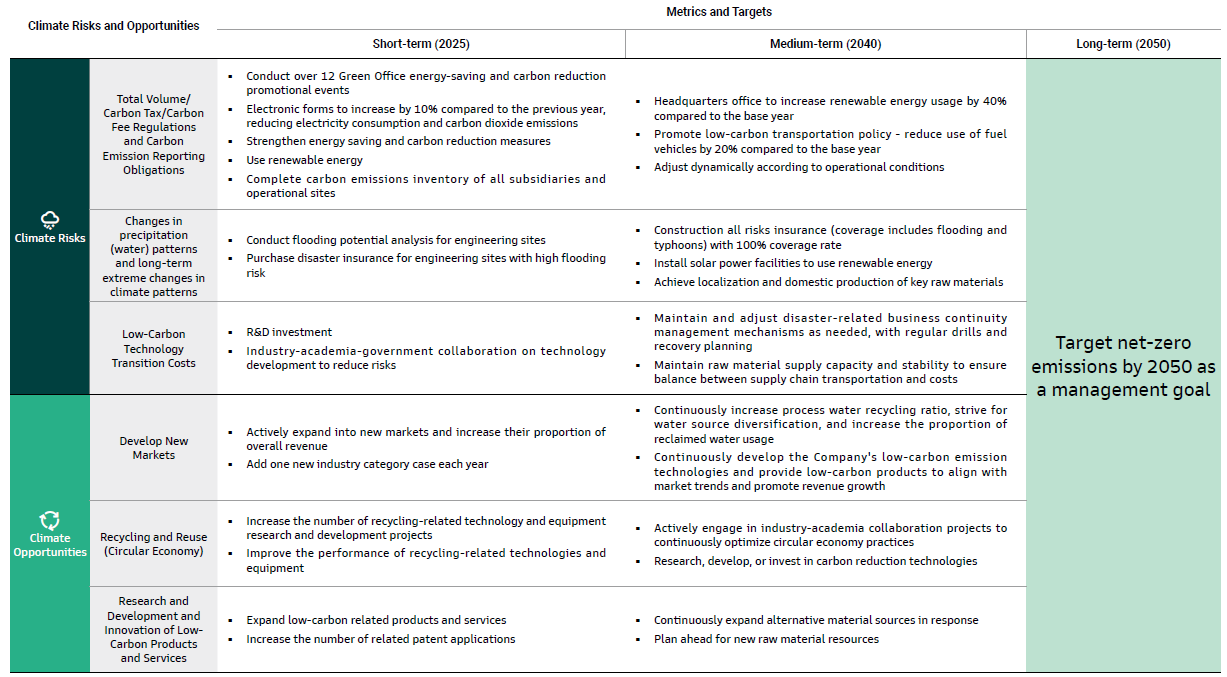
Greenhouse gas inventory
As a major source of carbon emissions, corporate efforts to reduce emissions play a crucial role in mitigating climate change As a key tool for quantifying corporate emissions, identifying emission reduction potential, and formulating reduction strategies, greenhouse gas inventories are gradually becoming an indispensable part of a company's low-carbon transformation.
Therefore, Novatech needs to actively respond to reduce its impact on itself and the environment. Although Novatech is not legally required to register or control greenhouse gas emissions, it voluntarily conducts greenhouse gas inventory to better understand its responsibilities and risks related to climate change issues. In accordance with the ISO14064-1 greenhouse gas inventory guidelines,Novatech adopts the operational control approach for greenhouse gas inventory and conducts materiality assessment based on significance principles. The results show that Category 2 (Scope 2), Category 3 (Scope 3), and Category 4 (Scope 3) are significant indirect greenhouse gas emissions. Among these, direct greenhouse gas emissions (Category 1) amount to 54.9609 tonnes CO2e(accounting for 16.58%); Category 2 (Scope 2) emissions are 87.5501 tonnes CO2e (accounting for 26.41%), Category 3 (Scope 3)amounts to 156.6844 tonnes CO2e (accounting for 47.27%), and Category 4 (Scope 3) is 32.2838 tonnes CO2e (accounting for 9.74%),totaling 331.4792 tonnes CO2e.
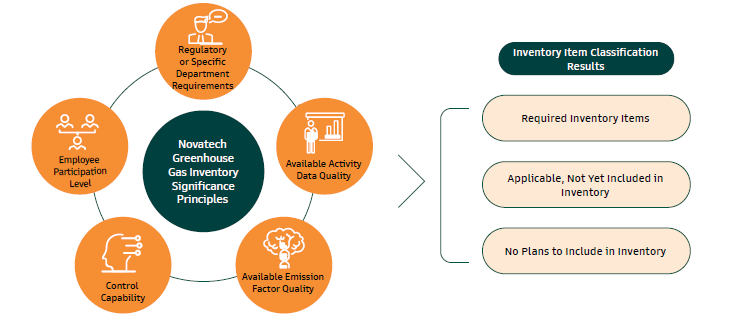
Compared to base year
Novatech has been conducting organizational carbon inventory for more than four years. The Scope 2 greenhouse gas emissions have decreased by 8.3931 tonnes CO2e, from 95.9432 tonnes CO2e in 2021 to 87.5501 tonnes CO2e in 2024. The year-over-year reduction has shown significant results. Recognizing the growing importance of Scope 3 emissions, starting from 2023, Category 3.4(9)downstream transportation and distribution carbon emissions were added, accumulating 9.6 tonnes CO2e, until 2024 Category 3: The indirect greenhouse gas emissions caused by transportation totaled 188.9682 tons CO2e. The statistical greenhouse gas emissions in 2024 were 331.48 tons CO2e, which increased by 2.12% compared to the base year (2021) emissions of 324.60 (tonCO2e).
In the future, Novatech will need to continue collaborating with the supply chain to promote environmental sustainability, aiming to achieve an absolute reduction of 4% in carbon emissions by 2030 compared to the base year (2021).
Analysis of Novatech's Greenhouse Gas Inventory Items
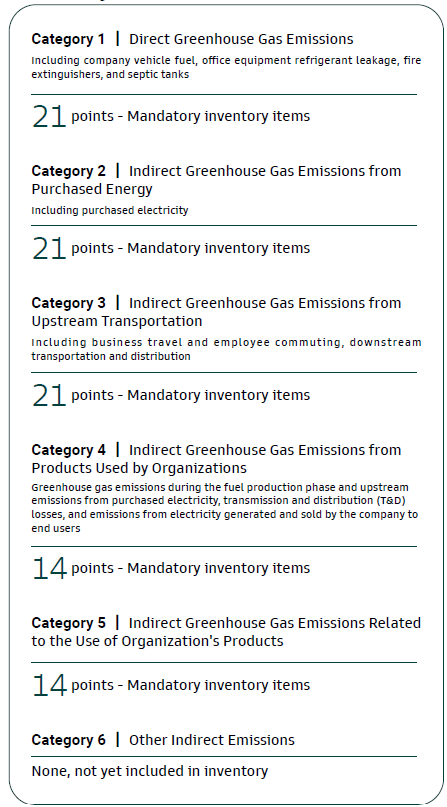
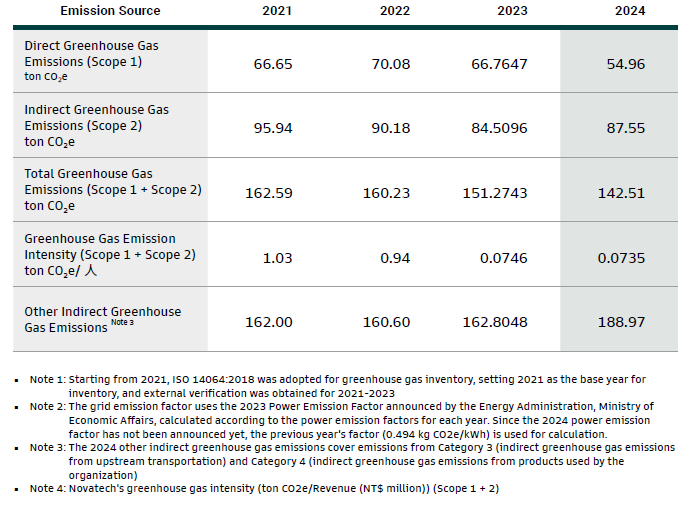
Scope 3 - Other Indirect Greenhouse Gas Emissions
Novatech Office Energy Saving and Carbon Reduction Code of Practice
